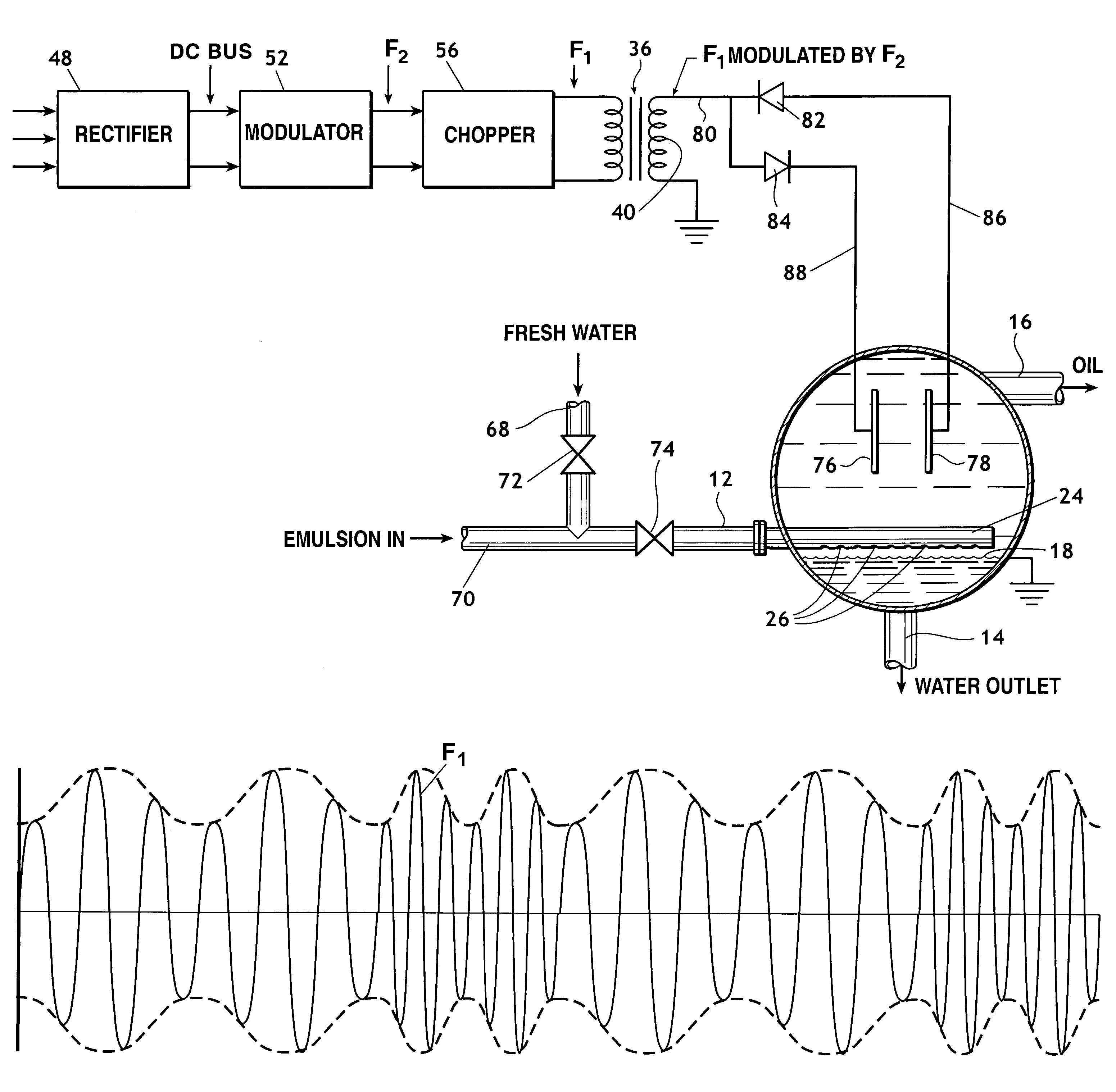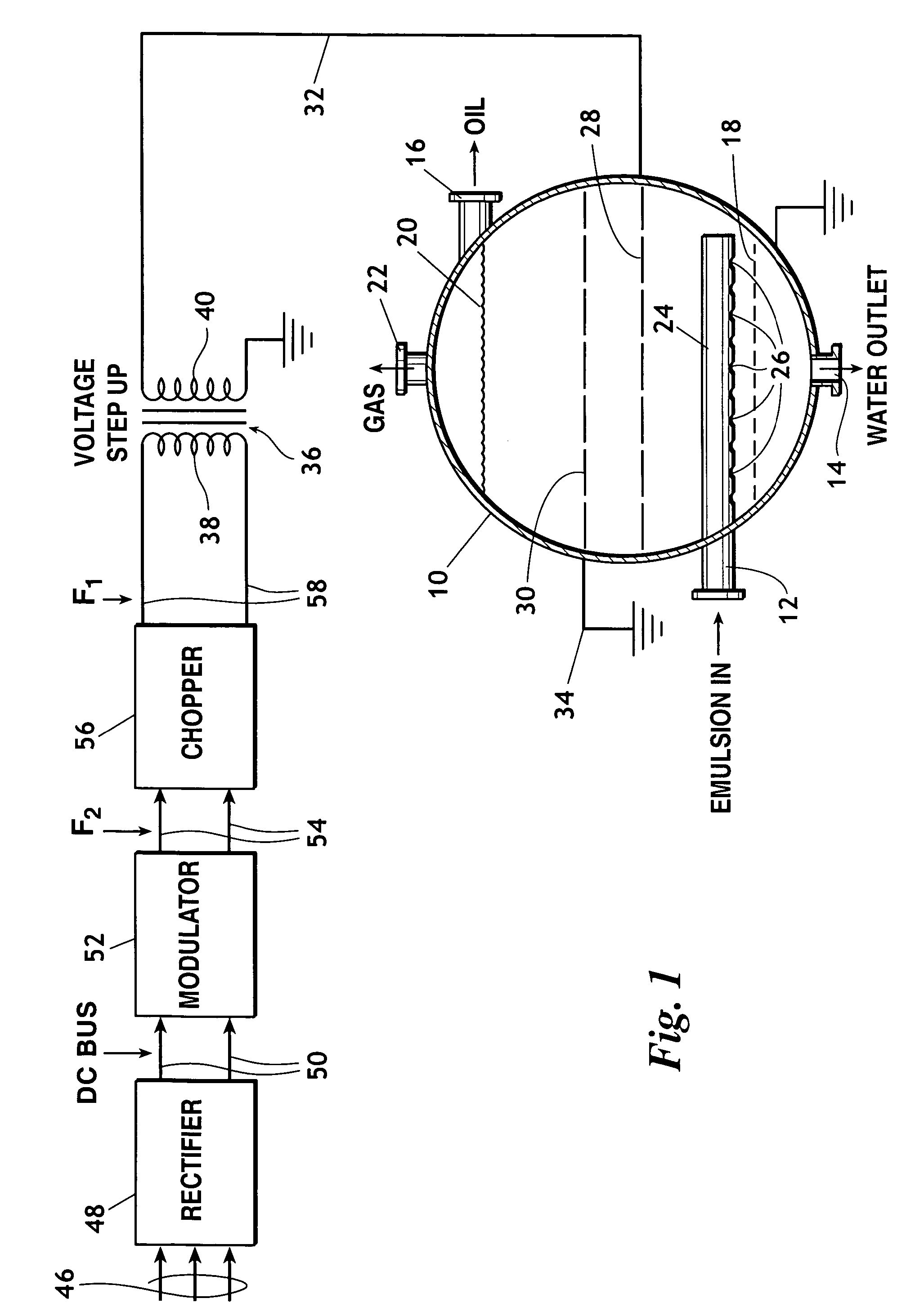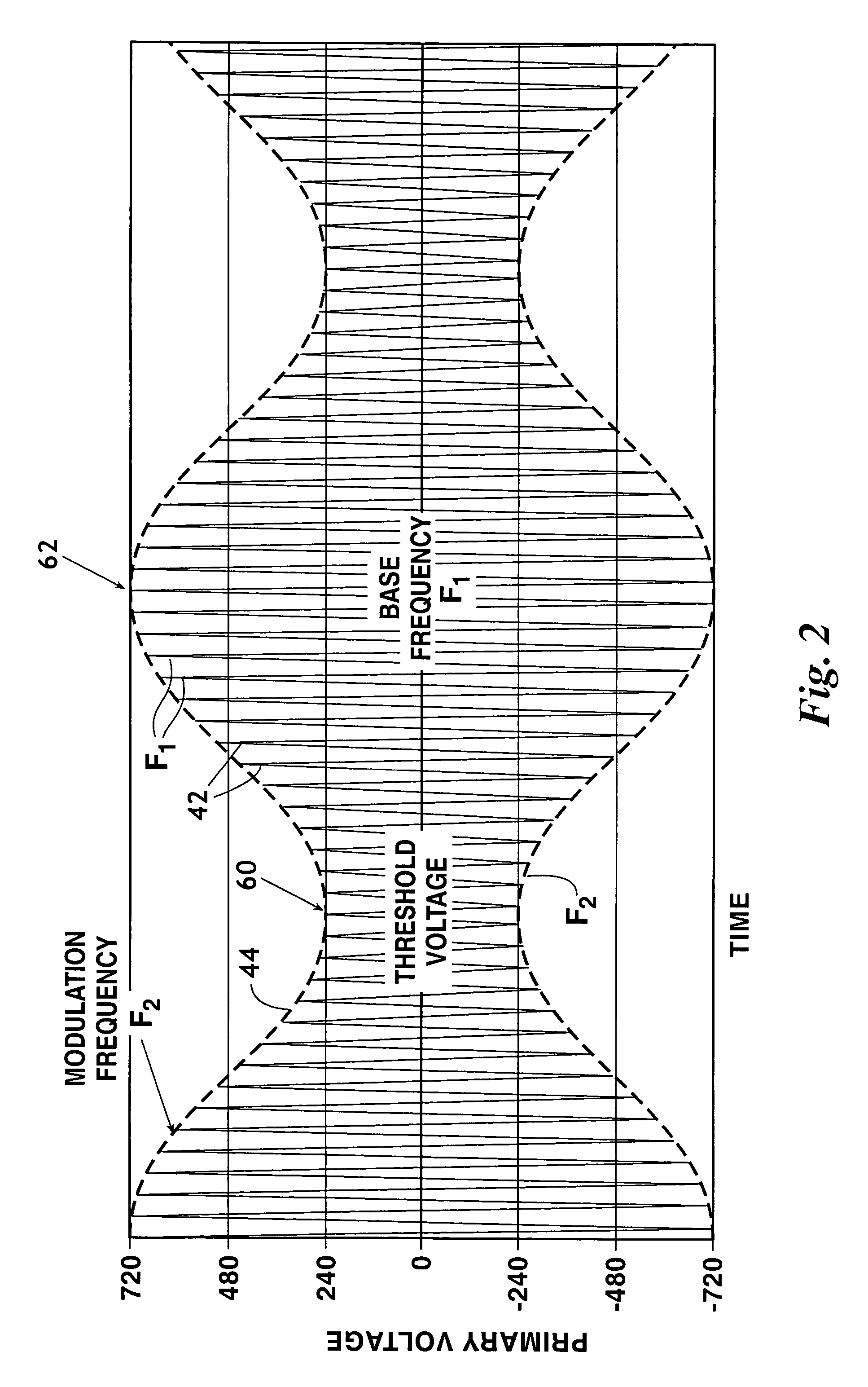Multiple frequency electrostatic coalescence
a technology of immiscible components and electrostatic coalescence, which is applied in the direction of energy-based chemical/physical/physicochemical processes, energy-based treatment water, refining by electric/magnetic means, etc., can solve the problems of increasing the difficulty of oil and water separation,
- Summary
- Abstract
- Description
- Claims
- Application Information
AI Technical Summary
Benefits of technology
Problems solved by technology
Method used
Image
Examples
Embodiment Construction
[0035]Electric fields have been used for augmenting the coalescence of emulsions for many years. Electric fields have been used as established by steady state DC voltage potentials, alternating current potentials, rectified alternating current potentials, pulsed DC voltage potentials and combinations of these. The use of electric fields to augment coalescence has been particularly employed in the petroleum industry to aid in the separation of water and oil. Coalescence means the joining of small droplets together to form larger droplets.
[0036]In recent years, improved coalescence results have been obtained by using pulsed DC voltage fields. This technology is significant in high water content applications—that is, typically where the water is over thirty percent (30%) of the emulsion and where traditional electrostatic processes do not function consistently and effectively. In order to establish pulsed DC fields in an emulsion having high water content it is normally helpful to util...
PUM
| Property | Measurement | Unit |
|---|---|---|
| diameter | aaaaa | aaaaa |
| conductivity | aaaaa | aaaaa |
| water droplet diameter | aaaaa | aaaaa |
Abstract
Description
Claims
Application Information
 Login to View More
Login to View More - R&D
- Intellectual Property
- Life Sciences
- Materials
- Tech Scout
- Unparalleled Data Quality
- Higher Quality Content
- 60% Fewer Hallucinations
Browse by: Latest US Patents, China's latest patents, Technical Efficacy Thesaurus, Application Domain, Technology Topic, Popular Technical Reports.
© 2025 PatSnap. All rights reserved.Legal|Privacy policy|Modern Slavery Act Transparency Statement|Sitemap|About US| Contact US: help@patsnap.com



